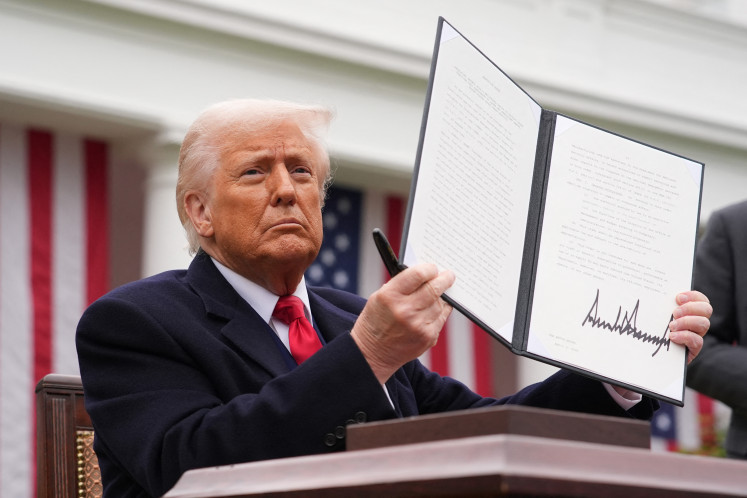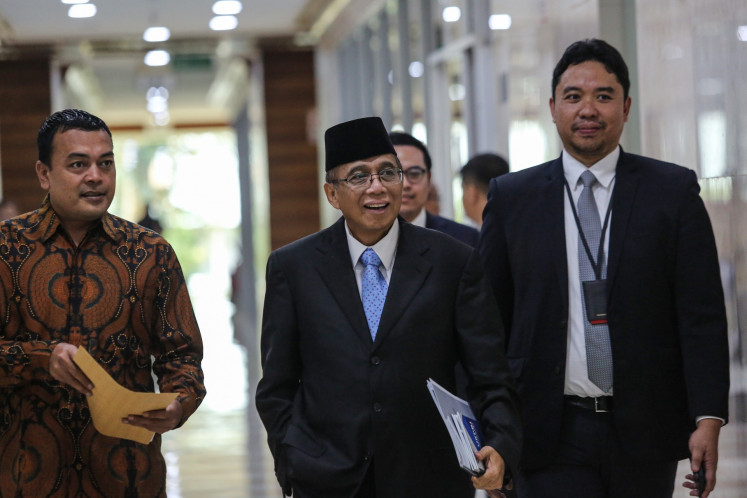Popular Reads
Top Results
Can't find what you're looking for?
View all search resultsPopular Reads
Top Results
Can't find what you're looking for?
View all search resultsCan AEC enforce its rules?
The ASEAN Economic Community (AEC) envisages ASEAN as a single market and production base
Change text size
Gift Premium Articles
to Anyone
T
he ASEAN Economic Community (AEC) envisages ASEAN as a single market and production base. However, there is a misunderstanding about the timeline of the AEC.
Some people thought that by 2015, ASEAN would enter into a single market. This is not true. Currently, ASEAN is a free-trade area and it would be almost impossible for it to be a single market by the end of 2015. The reason is if ASEAN intends to be a single market, it has to transform itself from a free-trade area to a customs union and then a single market.
Free-trade areas, customs unions and single markets are forms of economic integration. Economic integration can take several forms that represent varying degrees of integration. These are a free-trade area (elimination of tariffs and quantitative restrictions, but each country retains its external tariff), customs union (common external tariff), common market (free movement of goods and services), economic union (single economic policy), economic and monetary union (single economic policy plus single currency) and complete economic integration (single monetary, fiscal, social policy and the establishment of a supranational body). As an example, the EU is an economic and monetary union.
ASEAN will face difficulties in establishing its goal to be a single market. This difficulty lies in the different external tariffs of each of the ASEAN Member States (AMS). Cambodia, Laos, Myanmar and Vietnam have flexibility in implementing tariff reductions compared to the ASEAN-6 (Indonesia, Philippines, Malaysia, Singapore, Brunei and Thailand) due to their level of development. Thus, it might impede the achievement of a common external tariff.
Another problem is the non-tariff barrier of each AMS. Unlike the EU, ASEAN is attempting to tackle complex issues of non-tariff barriers (NTBs) without strong institutions. In the EU, the European Commission has broad power to investigate internal markets and identify NTBs.
The commission and private actors could resolve disputes about the findings through European courts. On the other hand, there is no supranational body such as the European Commission in ASEAN and there is no regional court in place.
In general, ASEAN is an intergovernmental organization whereas the decision-making capability in economic policy lies with AMS and is not delegated to a separate entity.
As economic integration usually involves a supranational body with the power to enforce its own rules, this raises a question on whether the AEC could enforce its rules.
As a free-trade area, the AEC has the ASEAN Trade in Goods Agreement (ATIGA), ASEAN Framework Agreement in Services (AFAS), ASEAN Comprehensive Investment Agreement (ACIA) and Protocol on Enhanced Dispute Settlement Mechanism (EDSM Protocol) as its main legal frameworks. The ASEAN Free-Trade Agreements with dialogue partners such as China, Korea, Australia and New Zealand are not considered part of the AEC.
The ATIGA, ACIA and AFAS regulate the fields of trade in goods, trade in services and investment, while the EDSM Protocol is intended to resolve disputes related to the implementation of those agreements.
However, in practice, there are some problems with these rules, especially the EDSM Protocol. Since its conclusion in 2004, the EDSM Protocol has never been invoked.
The reason that it has never been invoked is the tendency of AMS to fall back on the negotiating table (ASEAN Way), rather than using an enforcement-compliance mechanism through the EDSM Protocol. However, the problems do not stop there. The EDSM Protocol in itself is also legally problematic.
The EDSM Protocol is similar to the WTO Dispute Settlement Mechanism but it lacks exclusive jurisdiction. The protocol allows AMS to resort to other judicial measures for dispute resolution. Therefore, the EDSM Protocol is not the only forum to resolve disputes under the AEC.
Another crucial problem is Article 27 of the ASEAN Charter. This article allows the AMS to refer disputes under AEC rules to the ASEAN Summit. Therefore, if the EDSM fails to resolve the dispute, a party could bring a dispute to the Summit and thus provide a political solution for a legal problem.
Without a strong institution and dispute-settlement mechanism, the enforcement of AEC rules might be difficult. Without legal certainty on the implementation of AEC rules, private actors will look at the trade and investment climate of each AMS and not ASEAN as a whole.
It is highly advisable for ASEAN to build a regional institution and improve its EDSM to support the implementation of the rules of the AEC, for regional economic integration that is a first in Asia.
_______________
The writer works at the Directorate for Treaties of Economic, Social and Cultural Affairs at the Foreign Ministry. The opinions expressed are his personal views.










